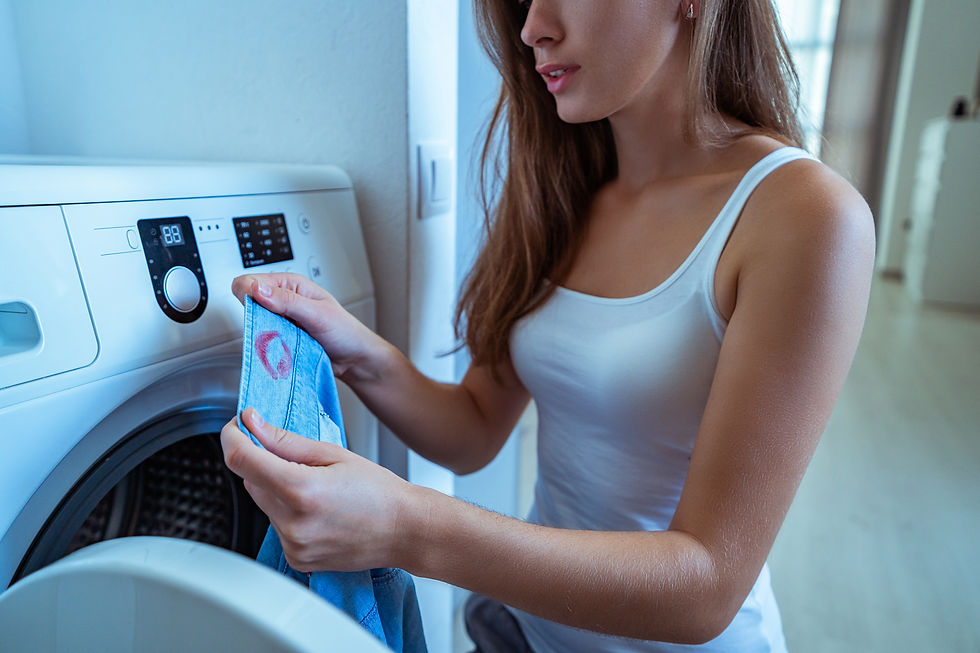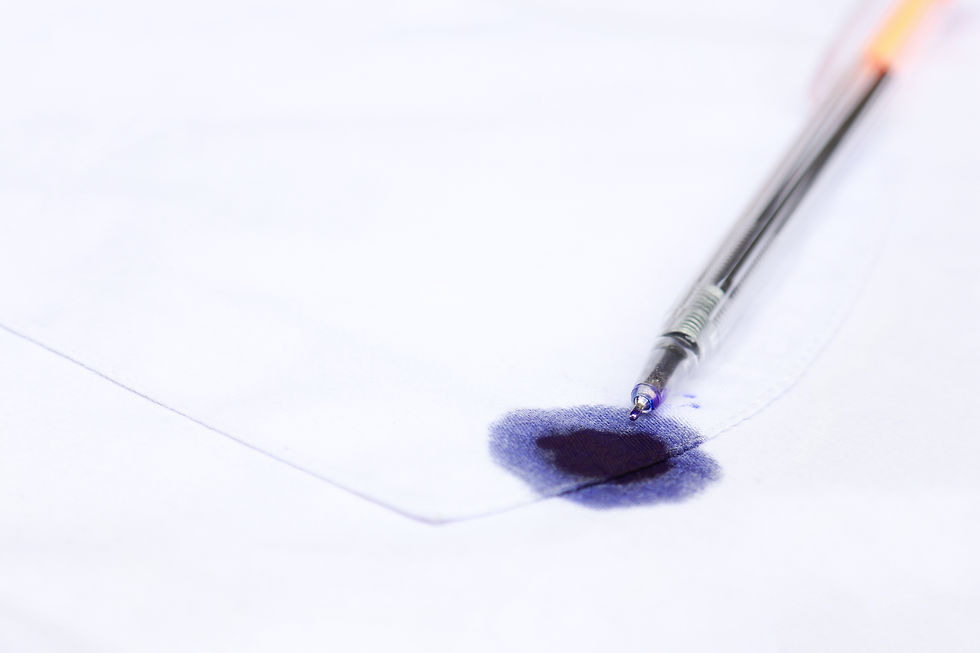Most of us have came across with this: You wear a brand new shirt, and in the middle of lunch you get a giant ketchup stain right in the middle of it—or maybe it’s peanut butter or spaghetti sauce. Whatever the stain, it will look unpleasant and can be tricky to remove. Did you know there are many different kinds of stains and each requires different types of cleaning solution to remove it? For example, if you try to clean a mustard stain using shower cleaner, you probably won’t get good results. Why does the type of stain matter? We’ll explore a few different kinds of stains and identify ways to treat it at home.
When it comes to stain removal, speed is of the essence. Push the stain off by washing the cloth from the inside out to prevent the stain further setting into the fabric. Once the stain sets, it's not impossible but it will take much more repetition of laundering and treatment to remove the stain. Also, do not use hot water to treat certain stains as it encourages the stain to set into the fabric!
Top 10 Stains

1) Wine/Blackcurrent
Wine and Grape stains are considered oxidizable stains. They are usually removed by using clorox bleach (for whites) and oxygen bleach (for colours). Best thing to do is to blot the stains quickly with disposable fabric/tissue as much as possible. Then use diluted amounts of bleaching agent to remove the stain.

2) Tea/Coffee
Tea and Coffee are considered tannins stain. Usually bleaching is the way to go. However, if you do not like bleaching, mild vinegar and lemon might be able to do the trick as well, depending on the level of staining.

3) Mustard/Curry/Chilli Sauce
Condiments and especially turmeric containing mustard or curry are notoriously difficult to remove due to their multiple layers of complex stains. Imagine a dash of your favourite hot kimchi jiggae has spilled over your white dress. You will have to remove the protein from the meat, greasy chilli oil and lastly the red chilli dye as well which has most likely set in already!
First of all, remove all excess stains as much as you can. Then treat the stain with an enzymatic bio based detergent. This should remove the protein and grease dirts. Lastly, either use a bleaching agent or a stain remover to remove the dye component. Note that tumeric sets very quickly so if you dont have success in the first attempt, it is very normal. Just give it a few more tries and it would do the trick.

4) Heavy Oil
Heavy oil stains are associated with particulate and greasy stains. If you ask any workshop mechanics that deals with heavy oil stains, they usually will point you to a heap of laundry detergent powder. Some laundry detergent powder perform better than the other depending on the formulation.
Use hot water to release as much oil from the fabric as you can and wash away the heavy oil with a good strong detergent. Alternative, one can also try our high performance clothing degreaser.

5) Body Sebum/Makeup/Lipstick stain
These types of stains are usually greasy and it always end up unfortunately onto your clothes by accident. However, they are not simple to treat as well due to its complex particulate, dye and greasy stain. Firstly, remove excess dirt and particulars with a blunt edge and do not rub it as this will push makeup further into the fibre of the fabric.
Use a stain remover and a good detergent to lift as much dirt, grease and dye from the fabric before using hot water to rinse it. Finally use a bleaching agent or stain remover to remove the dye stains. Repeat if necessary! Our very own formulated stain remover might be able to do the trick in a single wash!

6) Milk/Egg/Blood/Urine Stain
These types of stains are predominantly protein and will require protease enzymes to break it down further so that your detergent can remove the dirt easier. Do not use hot water as it will set the protein stain into the fabric and it will be much more difficult to remove the stain.
Try to rinse as much dirt off as you can with cold water, then use an enzymatic bio based detergent to break down the protein and wash the dirt away. Once stains such as blood is dried for days, it will be extremely difficult to remove then and most likely you will need professional help to remove these stains. Try to avoid ammonia for blood even though it is viewed as an effective blood remover due to it's harsh and dangerous chemical nature towards skin, lungs and the fabric itself.

7) Grass/Ink/Dye Stain
These type of natural dye stains have different fabric setting time depending on their chemical properties and molecular sizes. However as a general rule, try not to delay remediation when you have a dye mark on your fabric, as it will get harder to remove over time. Key is to not use hot water to set the colour in during washing.
Use an effective surfactant and stain remover to remove the stain. If it still doesn't work, then the use of bleaching agent will be necessary.

8) Mold/Mildew Stain - Plant/Bacteria Stain
The most effective to remove mildew stain on white fabric is bleaching using fabric grade clorox. However, note that you never apply clorox direct on fabric and always dilute it before use. It is also not suitable for coloured fabric. You can try to remove as much of the spores as you can via brushing in an external environment before chemically treating the fabric
For coloured fabric, white vinegar can also remove mildew stain. It involves direct spotting, pre-soaking and launder the fabric with hot water (but care not to exceed the maximum recommended washing temperature).

9) Rust Stain from Metals
This stain cannot be removed by normal detergent. You will first need to use some white vinegar to soak the stain. Once the vinegar reacts with the rust, wipe it off gently to avoid stain redepositing back into the fabric. However, if the rust stain is too strong, it might be better off to purchase an industrial grade rust stain remover, or leave it to the hands of professional laundrettes.

10) Paint/Nail Varnish - Solvent Stain
In order to remove these types of stain, you will need to use a compatible type of solvents to counter react. For example, soaking paint stained fabric onto thinner may assist the remove the paint stain itself. After using the correct solvent to remove, best to rinse the fabric off with a lot of water and detergent to remove any trace of hazardous solvent chemicals in the fabric to avoid potential risk of irritation on skin.
We hope that we have managed to impart some basic knowledge on how to remove stains. However, when it comes to complex stains, expensive and vintage clothing, it is always advisable to seek professional service to deal with it rather taking matters to your own hands. Have a open conversation with your local launderette and they are usually very happy to help you resolve your stain issues.

Comments